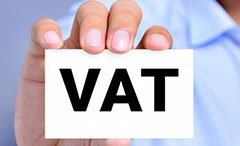Experts: Sound tax system boosts enterprises’ vitality
2017-10-17
english.gov.cn/Xinhua
With the 19th CPC National Congress approaching, the reform of China’s taxation system, which the incumbent government has carried out and promoted for five years, has risen as one of the main public concerns, ushering in brainstorming and discussions among experts.
Bearing the most significance of all taxation reform measures and tax cut policies, the reform of replacing the business tax with value-added tax has relieved the tax burden for enterprises by 1.7 trillion yuan ($257 billion). This implementation introduced the global tide of tax cuts in some sense.
Unified tax system
Nevertheless, there still exist skeptical public opinions believing that conglomerates and large enterprises, especially State ones, are at an advantage in the taxation reform, whereas private enterprises with small technology startups haven’t had access to tax relief, that they may even see an increase.
“This is ill-founded, as there isn’t any tax difference between State and private enterprises based on our unified tax system, in which the principle of neutrality is fully reflected, particularly in the stipulations for value-added tax,” said Li Wanfu, director of the Taxation Research Center under the State Administration of Taxation (SAT).
This statement of the State benefiting from public loss can be proved wrong by a set of statistics about the VAT reform. Tax cuts have been implemented in 26 minor industries since the full-scale promotion of the pilot reform last May. In addition, during the first seven months of this year, value-added tax, from four major industries —architecture, real estate, finance, and life services —totaled 756.8 billion yuan. This was lower than the corresponding due amount in business tax revenue, by 15.65 percent.
According to statistics presented by SAT, more than 98 percent of taxpayers have witnessed tax decreases or level off since the taxation pilot reform came into effect. A growing number of taxpayers are becoming beneficiaries of the change.
Improved tax collection
New progress in the tax change was seen in July, merging four tax rates into three. Some people think this change only intensifies tax-collection efforts despite the simplification. As a result, some enterprises are actually struggling with a tax increase.
“This makes no sense, either. Taxation reform and the optimization of tax collection and management are two separate issues. Tax evasion, which existed against the backdrop of a business tax system, can hardly continue to happen after it was transferred into a value-added tax system. This also demonstrates the considerable improvement of tax levy,” commented Zhao Quanhou, a researcher from the Chinese Academy of Fiscal Sciences.
Seeing eye to eye with Zhao on the improvement of tax-collection, Li Wanfu said, “Since the value-added tax came into force, inter-enterprise transactions have been linked together, rendering the temptation of tax evasion much weaker.”
Meng Chun, researcher at the Development Research Center of the State Council, pointed out that China introduced pre-emptive tax reduction policies compared to other major economies. The VAT reform, launched at the outset of 2012, is a tax reform covering the largest scale and has the widest spectrum in the last two decades. It has facilitated VAT deduction linkage, steered clear of tax-collection repetition, and enhanced the impartiality and efficiency of VAT.
Nonetheless, according to experts, there are a considerate number of enterprises, including private ones, sensing the heavy tax burden when faced with the downward pressure generated by the economic slowdown and industrial structure adjustment, which is actually attributed to growing operation costs.
“As a matter of fact, tax reduction measures have been playing a significant role in economic operation, supply-side structural reform, and the cultivation of new economic momentum, powerfully underpinning the stability and positivity of the current economic situation,” said Li Wanfu.
Li added that the next step forward in tax relief hinges upon a further boost in important taxation reform measures. In the meantime, enterprises are supposed to spur themselves toward solid development, synchronization with VAT deduction reform, and quicker adjustment of their own systems of production, operation, and financial accounting, in a bid to adapt to China’s improving taxation system.


